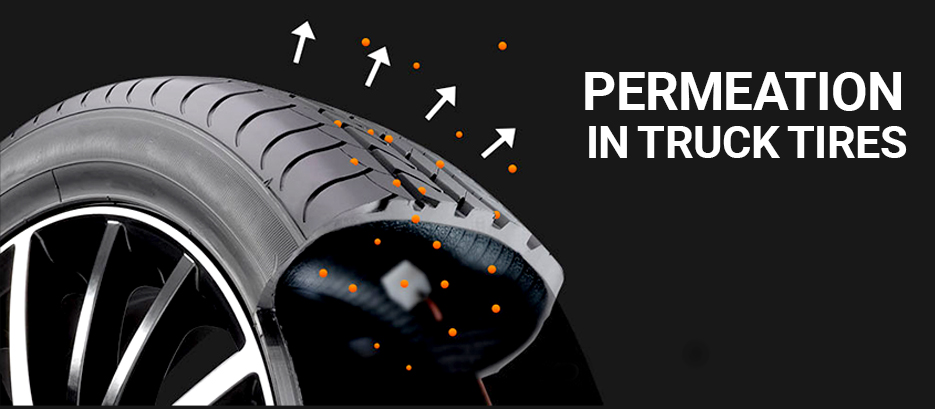Last Updated on August 28, 2024
Recognize the Telltale Symptoms of Truck Tire Issues Before It’s Too Late
If your truck is making strange noises like a humming or thumping sound or vibrating while you’re driving – it could be a dead giveaway that your truck tires are wearing down and probably need replacing.
Your truck’s tires are vital; if worn out, you might be putting yourself at risk. So when should you replace your tire? The best way to tell is by looking for significant signs that indicate when it’s time for new ones!
Knowing When It’s Time: Signs Your Truck Tires Need Replacement
Your truck’s tires are more than just rubber and tread; they’re crucial to your safety and performance. Recognizing when to replace them can prevent accidents and ensure a smooth ride.
In this guide, we’ll walk you through the warning signs that indicate your truck tires are reaching the end of their lifespan. From age-related concerns to tread depth and visible damage, understanding these signs will help you make informed decisions about the safety of your truck’s tires.
Let’s dive into the indicators that it’s time to consider new tires for your truck.
1. Your Tires Are More Than Six Years Old
The Rubber Manufacturers Association (now known as USTMA) recommends replacing truck tires every six years, regardless of how much they’ve been driven. Over time, the rubber compound in tires hardens and becomes less flexible, making them more susceptible to cracks, punctures, and other types of damage.

You can find the date code on the sidewall if you’re unsure how old your vehicle’s tires are. The last four digits of the code represent the week and year the tire was manufactured. For example, if the code ends with 1219, the tire was made in the 12th week of 2019.
2. Your Tires Have Less Than 4/32″ of tread remaining
Tread depth is critical for traction, especially in wet or icy conditions. The National Transportation Safety Board (NTSB: Special Investigation Report, pg. 35) recommends replacing your truck tires with 4/32″ or less tread remaining.
You can check tread depth using a tread wear indicator bar at the base of the tread groove. This bar becomes visible when the tread is worn down to 4/32″.
The Penny test

You can also use a penny to check tread depth. Place a penny into a tread groove with Lincoln’s head upside down and facing you. If you can see all of Lincoln’s head, then you have 2/32″ or less tread remaining. At this point, the US Department of Transportation recommends replacing your vehicle’s tires as soon as possible for your safety.
3. Tires of Your Truck Show Signs of Cracks or Cuts
Exposure to sunlight, heat, and cold can cause cracks in your truck tires’ sidewalls or around the treads. These cracks can weaken your tires and make them more susceptible to failure.

Inspect your vehicle’s tires regularly for cracks or cuts—especially if exposed to extreme temperatures—and replace them immediately if you notice any damage.
4. Your Truck Tire Keeps Losing Air Pressure
Tires naturally lose air over time due to permeation (the process by which air molecules seep through the tire walls) and temperature changes (as air expands when it’s hot and contracts when it’s cold). If your truck tire is losing air faster than usual, that could indicate a leak in the tire wall or valve stem.
Check your truck tires’ air pressure at least once a month using a reliable gauge and top off any tires that are low on air according to their recommended inflation levels. You can find these levels on a placard on your truck’s driver’s door jamb or the owner’s manual (or ask your dealership for help).

Proper tire inflation levels and regular inspection of your vehicle’s tires for signs of wear and tear are critical for ensuring safe driving conditions.
So, based on the information shared here and your actual situation – starting your search for the right tires for your truck is probably a good idea. Remember that your owner’s manual recommends the best truck tire for your case.
Selecting Your Replacement Tires with Ease
Our inventory has a wide selection of tires that you can choose from.
Searching for tires becomes easy as you can quickly search by brand, tire size, or category. Also, you can enroll for free in our Tires-easy Truck Membership to unlock the following member-only benefits:
- special member pricing
- early access to exclusive offers
- easy member-account management for a seamless re-ordering process
Conclusion
Your safety on the road depends on the condition of your truck tires. Please don’t ignore the warning signs that they might be failing you. By recognizing these symptoms of tire problems early, you can take proactive steps to ensure your safety and the longevity of your tires.
Your truck tires are your first line of defense on the road, and recognizing warning signs of trouble is paramount to your safety. The warning signs we’ve discussed can be the difference between a smooth journey and a dangerous blowout. Don’t underestimate the importance of regular tire maintenance and inspection.
Your vigilance can prevent accidents, save you from unexpected breakdowns, and ultimately ensure a smoother, safer ride. If you’ve noticed any of these warning signs, don’t wait – take action immediately to address the issue. Your safety and the safety of others on the road depend on it.
We’ll Help You Decide What’s Best for You
Visit Truck Tires (https://www.tires-easy-truck.com) today to explore a wide range of quality truck tires that will keep you rolling confidently down the road. If you need help determining whether you need new tires for your truck or wish to be assisted when you compare and select tire options, please contact us—we’ll be happy to help!
Curiosity piqued? By exploring more articles on Tire Easy Truck’s website, satisfy your tire-related questions. Your tired wisdom awaits!
FAQs
What are the three common symptoms of tire problems?
Common symptoms of tire problems include uneven tread wear, vibrations or wobbling while driving, and a persistent loss of air pressure. These signs may indicate issues with tire balance, alignment, or damage.
How do you know if you are about to have a tire blowout?
Warning signs of an impending tire blowout include a sudden decrease in tire pressure, a bulging or blistering tire sidewall, and a strong vibration or thumping sensation while driving. If you experience these symptoms, you must pull over safely and inspect your tires immediately.
How do I know if my truck tires are worn out?
Inspecting the tread depth, you can determine if your truck tires are worn out. Use a tread depth gauge or the penny test—if the tread is worn down to or below 2/32 of an inch, it’s time to replace the tires. Also, cracks, cuts, or visible damage on the tire’s sidewall may indicate the need for replacement.
What are the four common symptoms of tire problems?
In addition to the mentioned symptoms, another common sign of tire problems is an unusual noise, such as squealing or thumping while driving. Pay attention to your vehicle’s handling – if it feels less responsive or pulls to one side, it could indicate tire issues. Regular visual inspections and maintenance can help catch problems early and prevent more severe tire damage.










